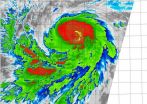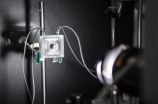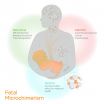(Press-News.org) Consider the pendulum of a grandfather clock. If you forget to wind it, you will eventually find the pendulum at rest, unmoving. However, this simple observation is only valid at the level of classical physics--the laws and principles that appear to explain the physics of relatively large objects at human scale. However, quantum mechanics, the underlying physical rules that govern the fundamental behavior of matter and light at the atomic scale, state that nothing can quite be completely at rest.
For the first time, a team of Caltech researchers and collaborators has found a way to observe--and control--this quantum motion of an object that is large enough to see. Their results are published in the August 27 online issue of the journal Science.
Researchers have known for years that in classical physics, physical objects indeed can be motionless. Drop a ball into a bowl, and it will roll back and forth a few times. Eventually, however, this motion will be overcome by other forces (such as gravity and friction), and the ball will come to a stop at the bottom of the bowl.
"In the past couple of years, my group and a couple of other groups around the world have learned how to cool the motion of a small micrometer-scale object to produce this state at the bottom, or the quantum ground state," says Keith Schwab, a Caltech professor of physics and applied physics, who led the study. "But we know that even at the quantum ground state, at zero-temperature, very small amplitude fluctuations--or noise--remain."
Because this quantum motion, or noise, is theoretically an intrinsic part of the motion of all objects, Schwab and his colleagues designed a device that would allow them to observe this noise and then manipulate it.
The micrometer-scale device consists of a flexible aluminum plate that sits atop a silicon substrate. The plate is coupled to a superconducting electrical circuit as the plate vibrates at a rate of 3.5 million times per second. According to the laws of classical mechanics, the vibrating structures eventually will come to a complete rest if cooled to the ground state.
But that is not what Schwab and his colleagues observed when they actually cooled the spring to the ground state in their experiments. Instead, the residual energy--quantum noise--remained.
"This energy is part of the quantum description of nature--you just can't get it out," says Schwab. "We all know quantum mechanics explains precisely why electrons behave weirdly. Here, we're applying quantum physics to something that is relatively big, a device that you can see under an optical microscope, and we're seeing the quantum effects in a trillion atoms instead of just one."
Because this noisy quantum motion is always present and cannot be removed, it places a fundamental limit on how precisely one can measure the position of an object.
But that limit, Schwab and his colleagues discovered, is not insurmountable. The researchers and collaborators developed a technique to manipulate the inherent quantum noise and found that it is possible to reduce it periodically. Coauthors Aashish Clerk from McGill University and Florian Marquardt from the Max Planck Institute for the Science of Light proposed a novel method to control the quantum noise, which was expected to reduce it periodically. This technique was then implemented on a micron-scale mechanical device in Schwab's low-temperature laboratory at Caltech.
"There are two main variables that describe the noise or movement," Schwab explains. "We showed that we can actually make the fluctuations of one of the variables smaller--at the expense of making the quantum fluctuations of the other variable larger. That is what's called a quantum squeezed state; we squeezed the noise down in one place, but because of the squeezing, the noise has to squirt out in other places. But as long as those more noisy places aren't where you're obtaining a measurement, it doesn't matter."
The ability to control quantum noise could one day be used to improve the precision of very sensitive measurements, such as those obtained by LIGO, the Laser Interferometry Gravitational-wave Observatory, a Caltech-and-MIT-led project searching for signs of gravitational waves, ripples in the fabric of space-time.
"We've been thinking a lot about using these methods to detect gravitational waves from pulsars--incredibly dense stars that are the mass of our sun compressed into a 10 km radius and spin at 10 to 100 times a second," Schwab says. "In the 1970s, Kip Thorne [Caltech's Richard P. Feynman Professor of Theoretical Physics, Emeritus] and others wrote papers saying that these pulsars should be emitting gravity waves that are nearly perfectly periodic, so we're thinking hard about how to use these techniques on a gram-scale object to reduce quantum noise in detectors, thus increasing the sensitivity to pick up on those gravity waves," Schwab says.
In order to do that, the current device would have to be scaled up. "Our work aims to detect quantum mechanics at bigger and bigger scales, and one day, our hope is that this will eventually start touching on something as big as gravitational waves," he says.
INFORMATION:
These results were published in an article titled, "Quantum squeezing of motion in a mechanical resonator." In addition to Schwab, Clerk, and Marquardt, other coauthors include former graduate student Emma E. Wollman (PhD '15); graduate students Chan U. Lei and Ari J. Weinstein; former postdoctoral scholar Junho Suh; and Andreas Kronwald of Friedrich-Alexander-Universität in Erlangen, Germany. The work was funded by the National Science Foundation (NSF), the Defense Advanced Research Projects Agency, and the Institute for Quantum Information and Matter, an NSF Physics Frontiers Center that also has support from the Gordon and Betty Moore Foundation.
Washington DC - August 28, 2015 - Oysters not only transmit human norovirus; they also serve as a major reservoir for these pathogens, according to research published August 28 in Applied and Environmental Microbiology, a journal of the American Society for Microbiology. "More than 80 percent of human norovirus genotypes were detected in oyster samples or oyster-related outbreaks," said corresponding author Yongjie Wang, PhD.
"The results highlight oysters' important role in the persistence of norovirus in the environment, and its transmission to humans, and they demonstrate ...
NASA-NOAA's Suomi NPP satellite flew over Hurricane Jimena in the Eastern Pacific and saw the strongest thunderstorms building up quickly, especially in the northern quadrant of the storm. Jimena intensified rapidly overnight on August 27 and early August 28 and the National Hurricane Center expects it to become a major hurricane.
The Visible Infrared Imaging Radiometer Suite or VIIRS instrument aboard the satellite provided infrared data of the storm that showed the coldest cloud top temperatures, which indicate the strongest thunderstorms were in Jimena's northern ...
Generating and storing renewable energy, such as solar or wind power, is a key barrier to a clean-energy economy. When the Joint Center for Artificial Photosynthesis (JCAP) was established at Caltech and its partnering institutions in 2010, the U.S. Department of Energy (DOE) Energy Innovation Hub had one main goal: a cost-effective method of producing fuels using only sunlight, water, and carbon dioxide, mimicking the natural process of photosynthesis in plants and storing energy in the form of chemical fuels for use on demand. Over the past five years, researchers at ...
If you think that performing CPR on a person whose heart has stopped is a surefire way to save their life, you may be watching too much TV.
The truth is more depressing than fiction, according to a new study by University of Southern California Davis School of Gerontology researchers. While medical dramas Grey's Anatomy and House show cardiopulmonary resuscitation saving a patient's life nearly 70 percent of the time, the real immediate survival rate is nearly half that - around 37 percent.
Researchers also found another discrepancy between reality and TV: Half of ...
TAMPA, Fla. - Pancreatic cancer is the fourth most common cause of cancer-related death in the United States and has a 5-year survival rate of only 6 percent, which is the lowest rate of all types of cancer according to the American Cancer Society. This low survival rate is partially attributed to the difficulty in detecting pancreatic cancer at an early stage. According to a new 'proof of principle' study published in Aug. 27 issue of Cancer Prevention Research, Moffitt Cancer Center researchers hope to improve pancreatic cancer survival rates by identifying markers in ...
Beach sand contains all kinds of microorganisms, including those that can harm human health. Yet current guidelines are focused exclusively on monitoring the levels of microbes in the water.
Now, an international panel of scientists is recommending monitoring the sand at recreational beaches, to minimize health risks for beachgoers. Their advice is based on the general consensus reached during the international conference "Trends in Environmental Microbiology and Public Health," held in Lisbon Portugal in September 2014.
"Beach sands accumulate contaminants and people ...
A collaboration between biologists and engineers at Monash University has led to the development of a new non-invasive image processing technique to visualise embryo formation. Researchers were able to see, for the first time, the movement of all of the cells in living mammalian embryos as they develop under the microscope. This breakthrough has important implications for IVF (in vitro fertilisation) treatments and pre-implantation genetic diagnosis (PGD). In the future, this approach could help with embryo selection before the embryo is implanted back into the uterus to ...
A German-French team has developed a light-sensitive switch that regulates a protein implicated in the neurobiology of synaptic plasticity. The agent promises to shed new light on the phenomenology of learning, memory and neurodegeneration.
Learning is made possible by the fact that the functional connections between nerve cells in the brain are subject to constant remodeling. As a result of activation-dependent modification of these links ('synaptic plasticity'), circuits that are repeatedly stimulated "learn" to transmit signals ever more efficiently. This process is ...
This news release is available in German.
A new international study shows that 5,000 foetuses in Europe annually are affected by spina bifida and other severe defects on the central nervous system. Seventy per cent of these pregnancies are terminated, while increased mortality and serious diseases affect the children who are born. At least half of the cases can be avoided by adding folic acid to staple foods as is already being done in seventy non-European countries.
A lack of folic acid enrichment in Europe is the cause of several thousand cases of foaetal abnormalities ...
Parents go to great lengths to ensure the health and well-being of their developing offspring. The favor, however, may not always be returned.
Dramatic research has shown that during pregnancy, cells of the fetus often migrate through the placenta, taking up residence in many areas of the mother's body, where their influence may benefit or undermine maternal health.
The presence of fetal cells in maternal tissue is known as fetal microchimerism. The term alludes to the chimeras of ancient Greek myth--composite creatures built from different animal parts, like the goat-lion-serpent ...


